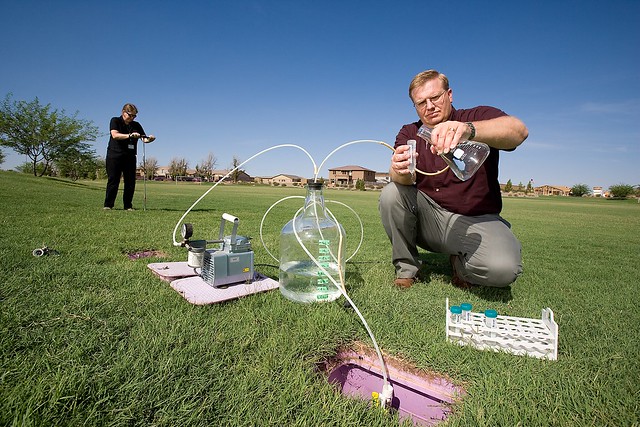Jul 21, 2020

Approximately one-half of 1% of the planet’s water is drinkable, and we use that water for much more than drinking – showering, brushing our teeth, watering our grass, etc. Consumer usage, however, pales in comparison to the amount of water needed to irrigate our crops.
According to USDA’s Economic Research Service, agriculture accounts for more than 80% of the nation's water consumption. With the need to feed a growing population, scientists from USDA’s Agricultural Research Service (ARS) are looking for ways to safely expand agriculture’s supply of usable water. USDA will stimulate innovation so that American agriculture can achieve the shared goal of increasing U.S. agricultural production by 40% while cutting the environmental footprint of U.S. agriculture in half by 2050.
“Water shortage is a problem. At any one time in the United States, there will be a drought occurring somewhere,” said Clinton Williams, lead research soil scientist at ARS’s U.S. Arid Land Agricultural Research Center in Maricopa, AZ.
Williams said there is plenty of water to be had, and his research shows that municipal wastewater can be used to irrigate crops.
“One of the best ways we can increase efficiency and sustainability is to reuse reclaimed water,” he said. “Some of the safety concerns are related to trace organic contaminants such as pharmaceuticals, hormones, and other contaminants. My research focuses on the safe reuse of this water.”
According to Williams, up to 95% of medications can be eliminated in urine, which results in sewer treatment plants continually receiving diluted pharmaceuticals. “That means effluent – sewage wastewater – may contain some pharmaceuticals at very low concentrations, typically in the parts-per-billion (ppb) range,” Williams said. In comparison, 1 ppb is roughly equal to singling out eight people from the entire world population. That pharmaceutical accumulation is practically nonexistent after the water is released into the soil.
In a previous report, Williams noted that a person would have to consume up to 200 pounds in one day to ingest the equivalent of a daily dose of any of the compounds found in medications.
As a 28-year veteran of environmental research focused on water quality and quantity, Williams believes in the nation’s ability to expand its water supply safely through the reuse of municipal wastewater. “The safe use of wastewater to irrigate food crops is manageable with treatment and monitoring,” he said.
You May Also Like
Write a Response
"may" - Google News
July 21, 2020 at 10:24PM
https://ift.tt/32HuGya
Treated Wastewater May Be the Irrigation Wave of the Future - USDA.gov
"may" - Google News
https://ift.tt/3foH8qu
https://ift.tt/2zNW3tO
Bagikan Berita Ini














0 Response to "Treated Wastewater May Be the Irrigation Wave of the Future - USDA.gov"
Post a Comment